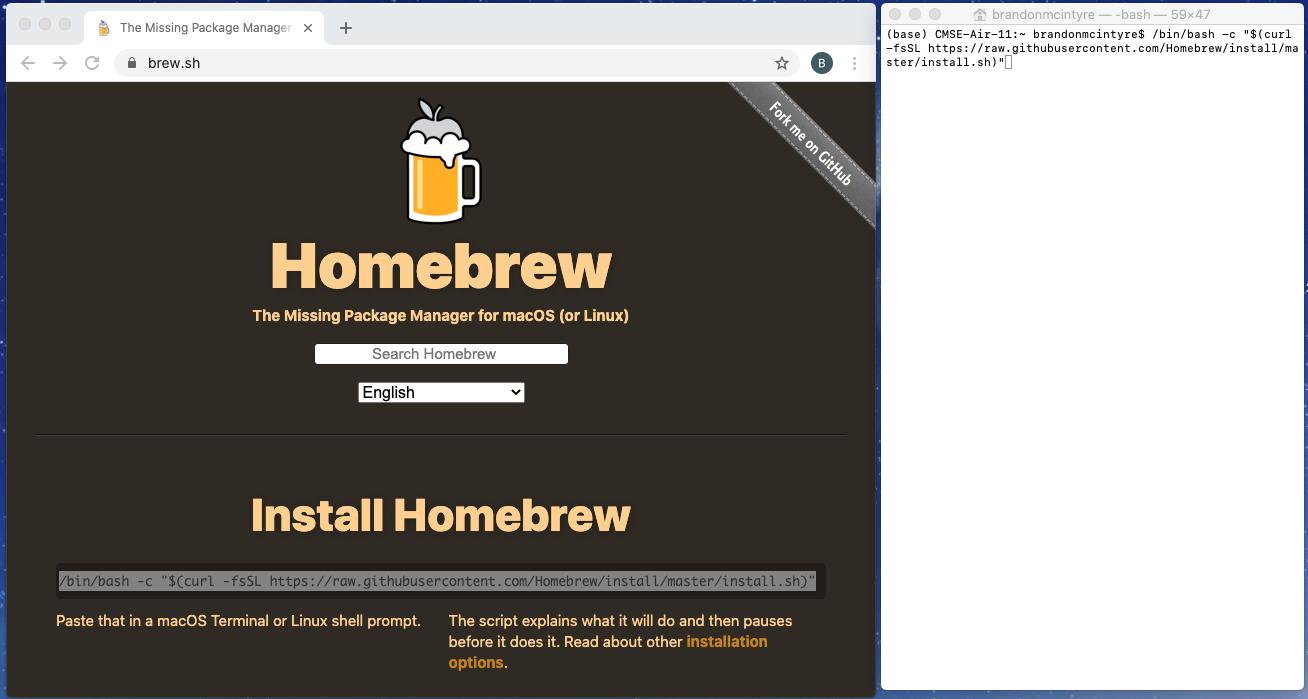
These are somewhat hardcoded locations for Homebrew and there is not much we can do about it. The two locations live independently of one another: /usr/local for rosetta-emulated (Intel) code and /opt/homebrew for ARM64.
TERMINAL HOMEBREW INSTALL MAC INSTALL
If I did not do so, I got the following error on brew when trying to install an application that was not available for the M1 architecture: Error: Cannot install in Homebrew on ARM processor in Intel default prefix (/usr/local)! Though Homebrew has been updated for the ARM architecture, it does not simply work out of the box with the architecture fl as well as the Intel emulated Rosetta. usr/sbin/softwareupdate -install-rosetta agree-to-license (root permission required) usr/sbin/softwareupdate -install-rosetta I installed it using the terminal itself. But since I was working mostly in the terminal, I did not get the prompt to do so. The user does get prompted for the installation of Rosetta when installing an Intel-based application.

Rosetta 2 sadly does not come pre-installed and we have to explicitly install it. After going through quite a few Stackoverflow questions and Github issues, this is what worked for me for installing Intel-based packages on the M1 mac. This might not be the best approach to doing things in the future, but this is the ecosystem’s state right now.
TERMINAL HOMEBREW INSTALL MAC PRO
Rosetta 2 was a savior, and I will not be returning my M1 Macbook Pro because of it. Luckily, Apple announced Rosetta 2, which acts as a translation layer for applications built for Intel macs to run on the new Apple Silicon Macs. So packages that do not have support for ARM cannot be installed by default.

As you might know, the M1 macs run on a 64-bit ARM CPU, relative to the older Intel CPUs. I love the M1 mac’s performance, but installing packages and software using Homebrew has not been as straightforward as I had hoped for. Installing Intel-based packages using Homebrew on the M1 mac ended up being one such pain for me. Though things are slowly improving, there are still many gotchas when it comes to using the first generation of a product. I recently got the new Apple Silicon Mac (aka the M1 mac), and that means having to deal with the pain points of buying the first generation of something product.


 0 kommentar(er)
0 kommentar(er)
